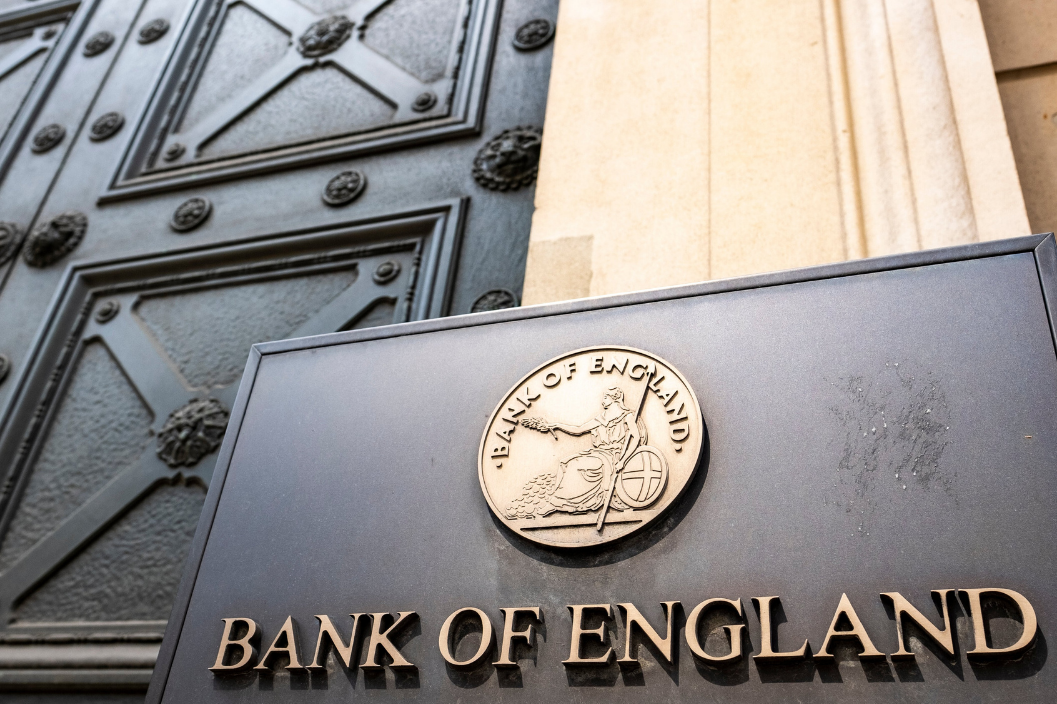How alternative investments can mitigate UK inflation impacts
Following the news that UK inflation rates hit decade-highs of 4.2% in October, the pressure for experienced investors to mitigate their capital losses via alternative routes has heightened amid what the Governor of the Bank of England has labelled a ‘very uneasy situation’.
Exceeding both market and economist expectations, last month's inflationary high saw the UK CPI (consumer price index) rise 1% from its 3.2% September figure, surpassing market forecasts of 3.9% in what has proven the highest level of inflation since December 2011.
With the Bank of England ‘s (BoE) Monetary Policy Committee (MPC) voting earlier in the month to continue the base rate freeze that has held base interest at 0.1% since March 2020, this disparity in growth between inflation and interest has become of increasing concern to investors wary of the prospect of further capital erosion.
Speaking on the topic, BoE governor, Andrew Bailey, said: “I’m very uneasy about the inflation situation.” Adding “It is not, of course, where we wanted to be, to have inflation above target. On the decision itself, however, it was a very close call in my view.”
Though many expect the MPC to increase the base rate in their December meeting following favourable November employment figures, nothing can be certain, and with inflation forecasted to rise to 5% by spring 2022, assessing the UK’s alternative investment landscape is proving crucial for investors keen to sustain and grow their portfolios against an adverse fiscal backdrop.
What does this mean for investors?
For many an experienced investor, this unfavourable combination of increasing inflation and a long stagnated CPI has been problematic, particularly for the lower interest, long term-oriented portion of their portfolio (typically making up 40% of the traditional “60:40” split).
Traditionally composed of low interest products such as gilts and corporate bonds (that at present often target interest rates below 1%), this segment is primarily designed to deliver more steady, predictable returns over time, acting as a protective blanket by offsetting the potential fluctuations the remaining 60% of the portfolio may accumulate.
Though still a popular route for segmenting investments, doing so with particularly low interest bonds is a route that is becoming less and less appealing as inflation rises, largely due to the simple fact that any interest on investments that sits below the current rate of inflation will ultimately erode its value over time, in real terms.
Implying, at the time of writing, that investors must target interest rates in excess of 4.2% to achieve positive returns relative to inflation, it is no surprise that low interest bonds may no longer be as attractive to experienced investors as they once were, and that the UK’s decade-high inflationary period has instead reinforced the need for higher interest alternative investments.
Rachel Springall, Finance Expert at financial data firm Moneyfacts, said: “Inflation erosion on the true spending power of cash persists, and any attempt to ease the strain is unlikely to ease frustration of investors in a low-interest environment. The murmurings of a base rate rise could mean a further uplift to interest rates, but investors would be wise not to wait around for this to come to fruition.”
This dilemma stands true for individuals who have sums of capital stored in low-yielding instant access savings accounts, too, which alone make up over £944 billion of total savings despite offering a maximum interest rate at present of just 0.66%.
But although the prospect of capital erosion on such a significant scale appears as though it should be of concern - in particular to those who have amounted considerable savings - perhaps surprisingly, a recent study by YouGov and Canaccord Genuity Wealth Management found a significant proportion of high-net-worth individuals did not take the risks soaring inflation poses to their wealth as seriously as we may expect.
In the study, 55% of the 1,006 high-net-worth individuals surveyed - who all owned more than £750,000 in savings and assets - claimed they were “unconcerned about the impact of inflation on their savings and investment.”
Such findings are particularly alarming, not only due to the well-documented impacts soaring inflation can have on the erosion of savings and devaluation of low-interest bonds, but equally so due to its historical associations with stock market value fluctuations.
In principle, inflation has an insidious effect on the stock market: as input prices increase, consumer purchasing power decreases, negatively impacting corporate profits and in turn contributing to greater fluctuations in the stock market (especially in the case of growth stocks).
And where this is a general rule of thumb that can vary widely depending on micro and macroeconomic variables, in recent days following the announcement of the UK’s 10-year and US’s 31-year high inflation rates, such patterns across the global stock market have already started to emerge, with indexes such as the UK’s FTSE 100 proving particularly reactive after dropping 1.7% this week alone. Market analyst Chris Beauchamp labelled this “a dismal week for the premier UK index.’
Speaking on the historic association between peak inflation and the stock market, economist, Michael Lebowitz, added: “In six of the seven inflationary periods, including both episodes in the 1970s, corporations experienced margin compression. The era of moderate inflation, following the 2008/09 recession, was the only period where margins improved.
Profit margins are now at their highest levels since at least 1947. If inflation continues higher and margins decline, profits will suffer. If earnings decline due to declining margins and valuations fall to levels in line with prior periods of inflation, stocks could easily fall by 40-50%. Even more significant declines would not be abnormal.”
In a crucial period whereby stocks, bonds and savings all have the potential to be adversely impacted by a peak global inflationary wave, it is becoming increasingly important - for experienced investors and high-net-worth individuals especially - to identify the UK’s alternative investments best equipped to conserve and grow capital amid a dynamic economic landscape.
What alternatives exist?
When identifying the routes investors can target when looking to make their investment portfolio as inflation-resistant as possible, exploring the UK’s alternative investment space is often a good starting point when faced with the question of “What should I invest in during inflation?”.
Loosely defined as financial assets that do not fall into conventional investment categories such as stocks, bonds or cash, alternative investments span everything from tangible assets such as art, wine and antiques to private markets like venture capital, private equity and private property investments.
This broad, flexible classification and decentralised nature gives alternative investments relatively little correlation with the market fluctuations that dictate the performance of traditional asset classes like government bonds or growth stocks, and with this, means they can be particularly effective at maintaining value during periods of high market volatility like inflation.
Addressing the issue of gradual, inflation-accelerated capital erosion specifically, one example of a recently popularised higher-interest alternative to traditional bonds is fixed-term property bonds.
Property bonds have become especially relevant as of late due to their active contributions in aiding the acceleration of the UK housing market and to the equally appealing investor benefits they boast, often targeting interest rates between 6% and 8%.
Not only do these considerable interest rates and “hands off” property investment opportunities make property bonds an attractive substitute to traditional bonds in periods of high inflation especially, but so too do their tax-efficient qualities - allowing investors to use part or all £20,000 tax-free ISA allowance to invest in Innovative Finance Isa-eligible (IFISA) property bonds.
This combination of inflation-beating target interest rates, gradual fixed-term repayment, and generous tax efficiency is what has made property bonds a particularly attractive alternative investment in 2021 and helped the IFISA to surpass £1bn in total investment earlier in the year.
Where high-interest alternative bonds like property bonds seek to serve the 40% of the typical 60:40 investment portfolio, it can be helpful to note that effective alternatives to more volatile equities such as growth stocks are also available for UK investors eager to protect their portfolio against inflation.
For experienced investors who strive to generate long-term growth by investing in stocks, but are keen to balance their portfolio with the addition of less volatile alternative investments into companies, tax-efficient venture capital (VC) schemes such as the Enterprise Investment Scheme (EIS) and Seed Enterprise Investment Scheme (SEIS) have proven especially popular over recent years.
Thankfully EIS calculators exist enabling you to visualise and plan your EIS-Investments. Such calculators can calculate tailored estimates of your potential investment returns, capital gains deferrals, income tax reliefs or IHT exemptions, helping you to plan your investment portfolio.
Two of the most well-regarded routes for investing into early-stage companies across Britain, the EIS and SEIS have together raised a combined total of £25.4 billion in investment for some of the UK’s most promising high-growth startups.
Unlike traditional stocks whereby levels of inflation can impact the value of an investment on a daily, and even hourly basis, the EIS and SEIS offer investors a stake into an early-stage company with the view that it is eventually repaid (with a given targeted multiple of money-on-money returns) via a company exit, often several years later.

This not only means EIS and SEIS investments can be more resistant to frequent market fluctuations (due to their focus on a smaller, single company) than those that growth stocks are prone to, but that the additional tax benefits they offer (from 50% income tax relief to inheritance tax exemption to loss relief) can offset a notable degree of the risk that is associated with early stage investments, whilst also aiding in reducing the tax bill and saving for later life.
Just three examples of popular alternative investment options available to UK investors keen to rebalance their portfolio with inflation protection in mind, regardless of the strategy you follow, ensuring a balanced, considered portfolio is no doubt one of the key factors in strengthening your investment portfolio throughout current and future windows of fiscal volatility.
Diversifying for protection
Following a past 18 months defined by uncertainty and exceptionality, actively diversifying an investment portfolio can be a key priority for any investor keen to future-proof their capital and assets to the best of their ability.
Whether that involves spreading risk by diversifying by sector, reducing the likelihood of inflationary erosion by diversifying into alternative investments or just regularly assessing your portfolio to ensure optimum exposure to risk, growth and impact, portfolio diversification can play a crucial role in ensuring external volatility is kept to a minimum.
Whichever balance your portfolio adopts - whether inflation-considered via the aforementioned methods or otherwise - consistently researching the latest consumer price index fluctuations, BoE updates and the ever-expanding library of alternative investments that the UK has to offer can only be a positive step in strengthening your investment portfolio to withstand even the most unprecedented fiscal fluctuations.
%20(3)%20(2).jpg)













